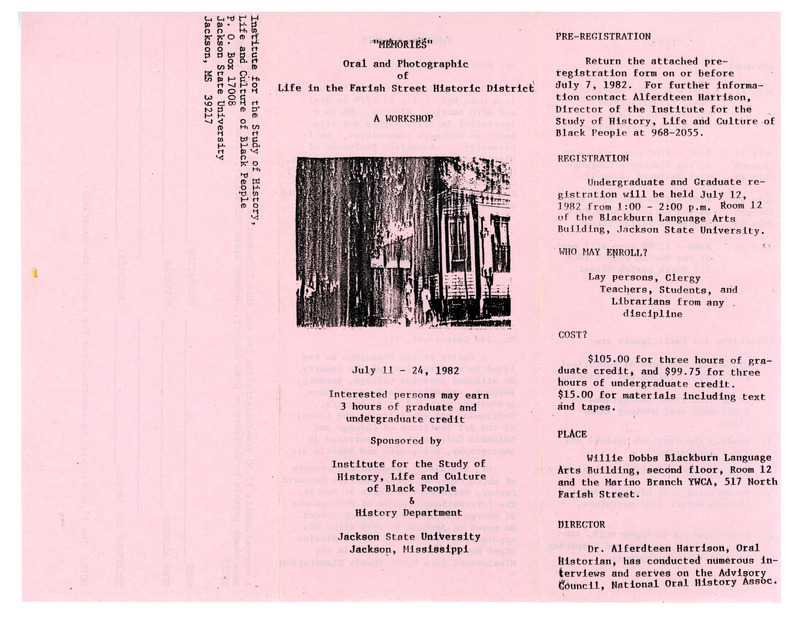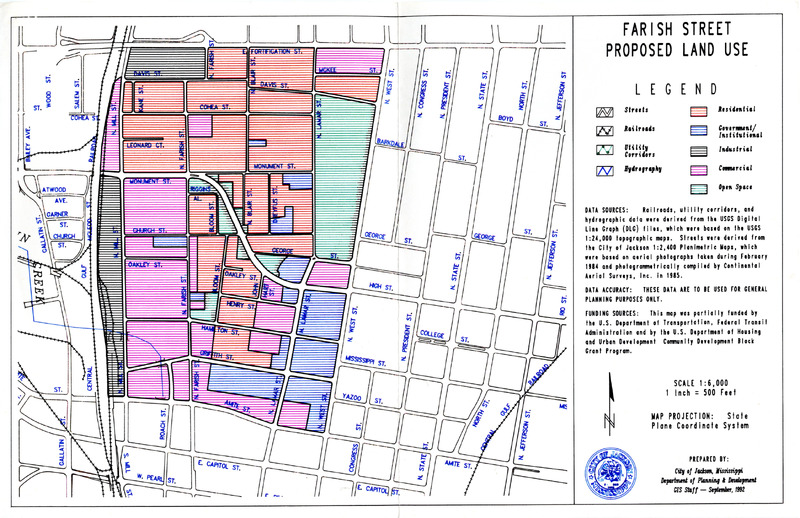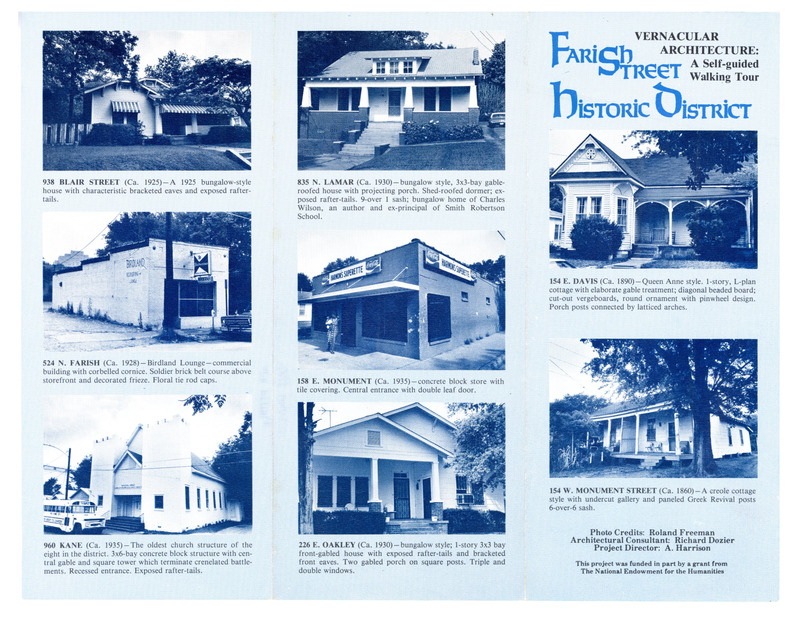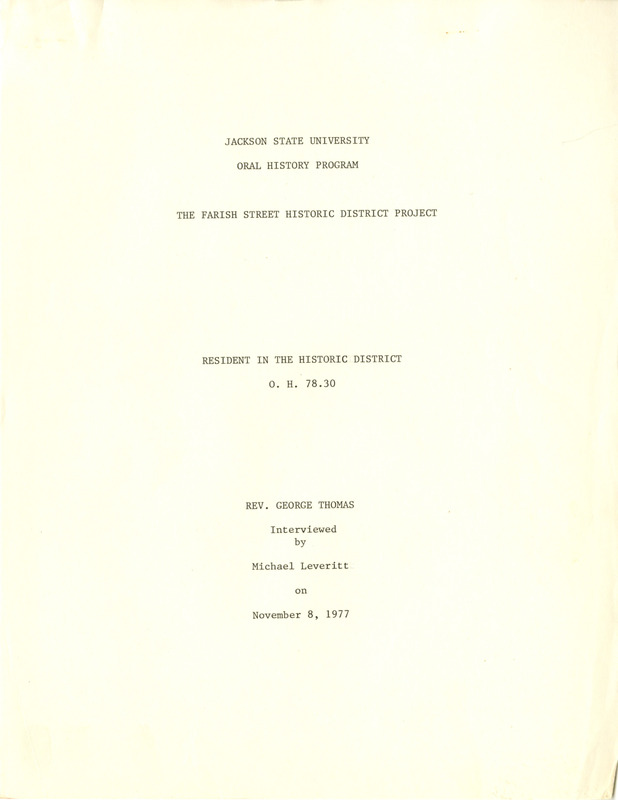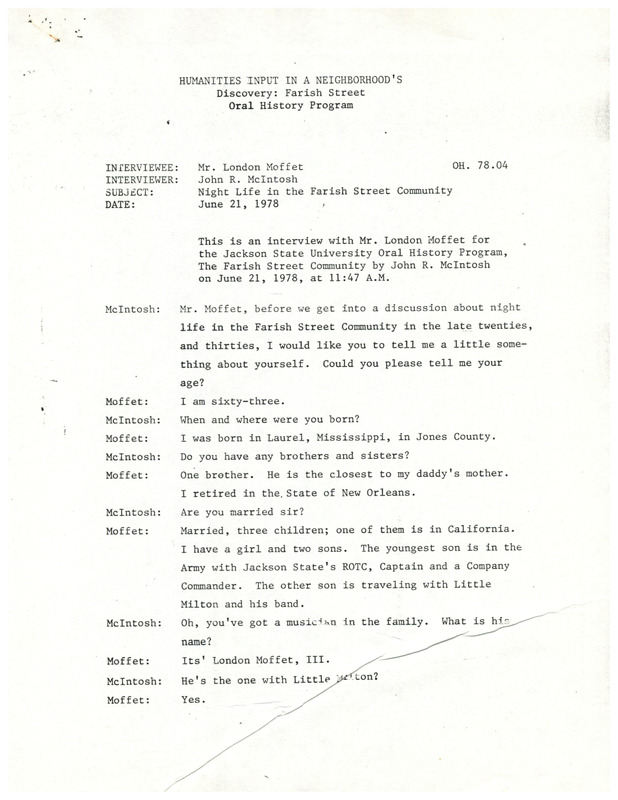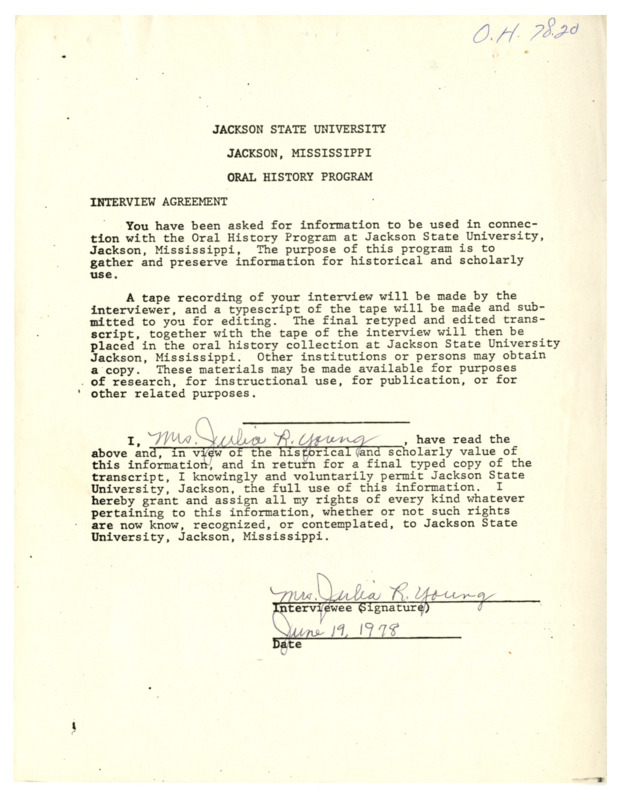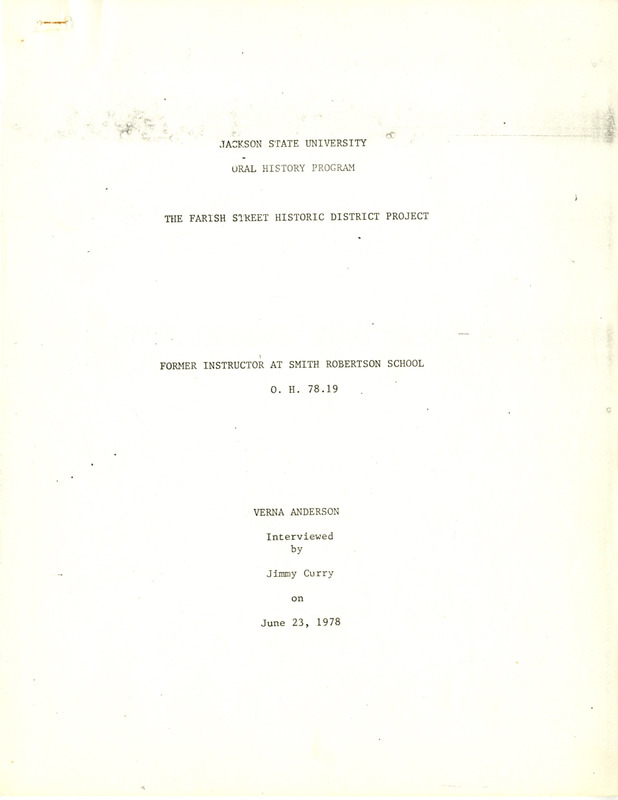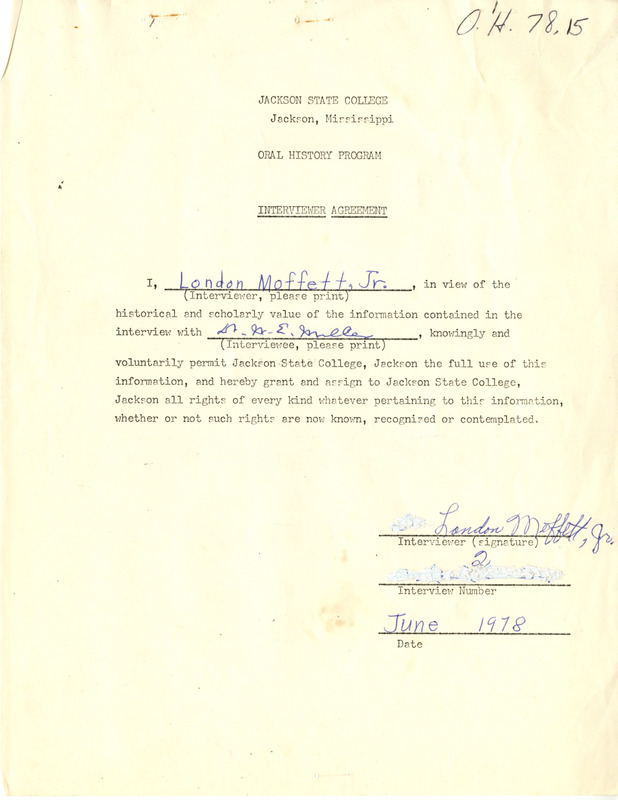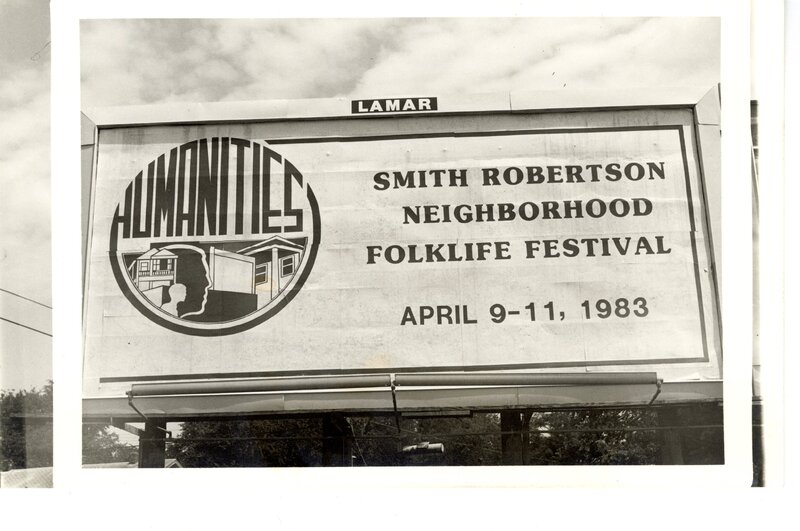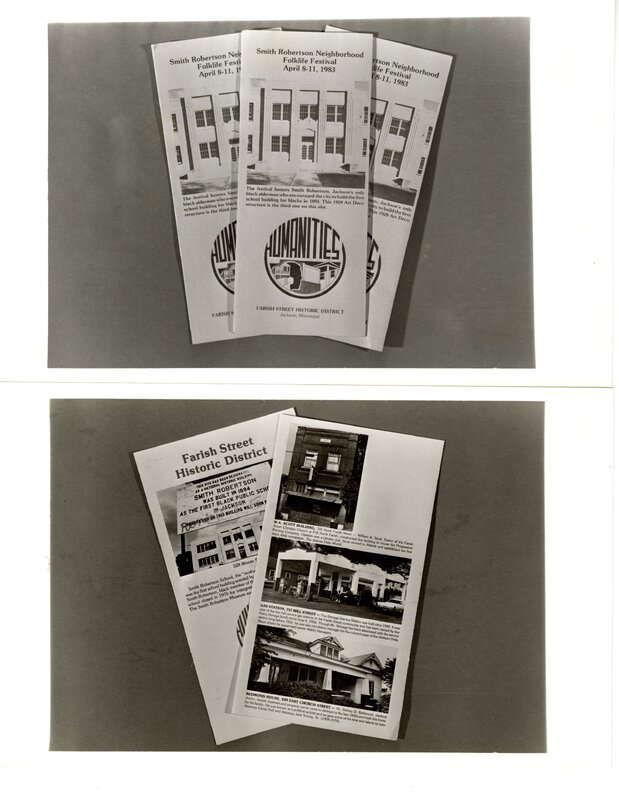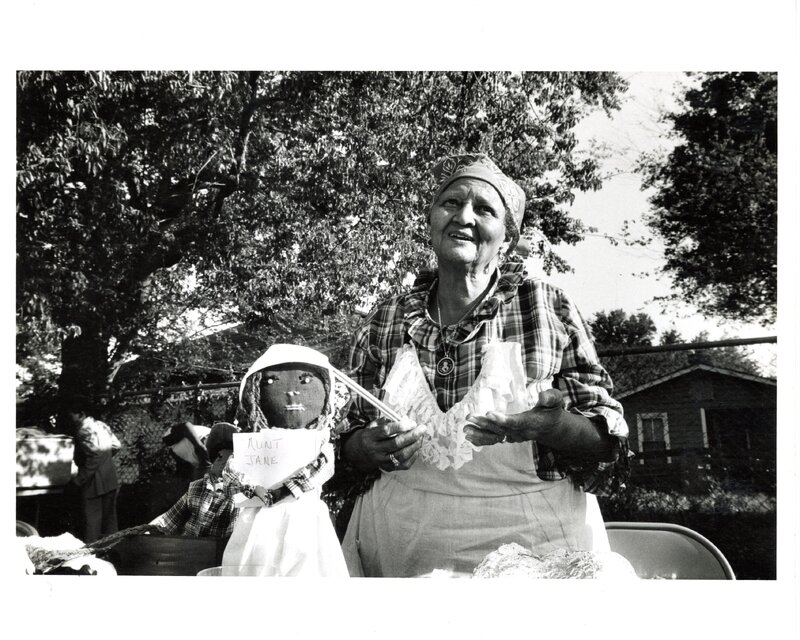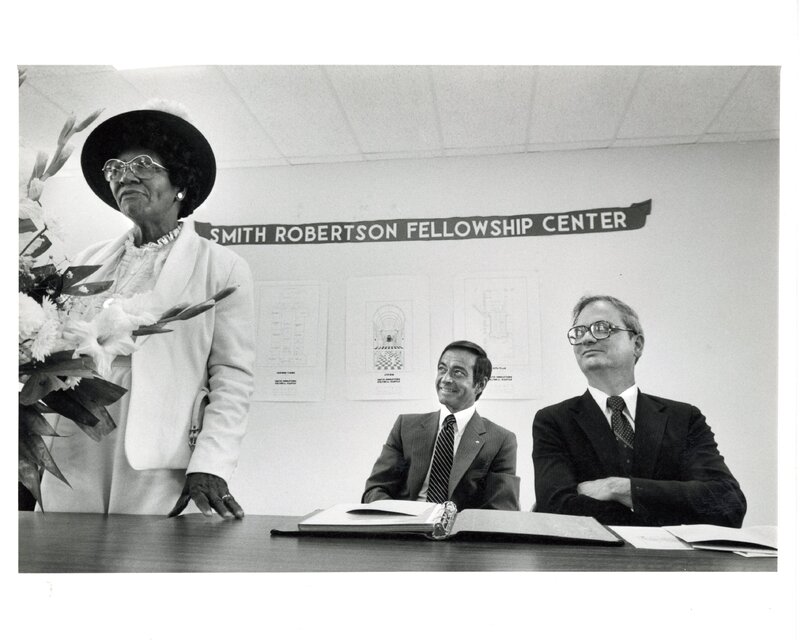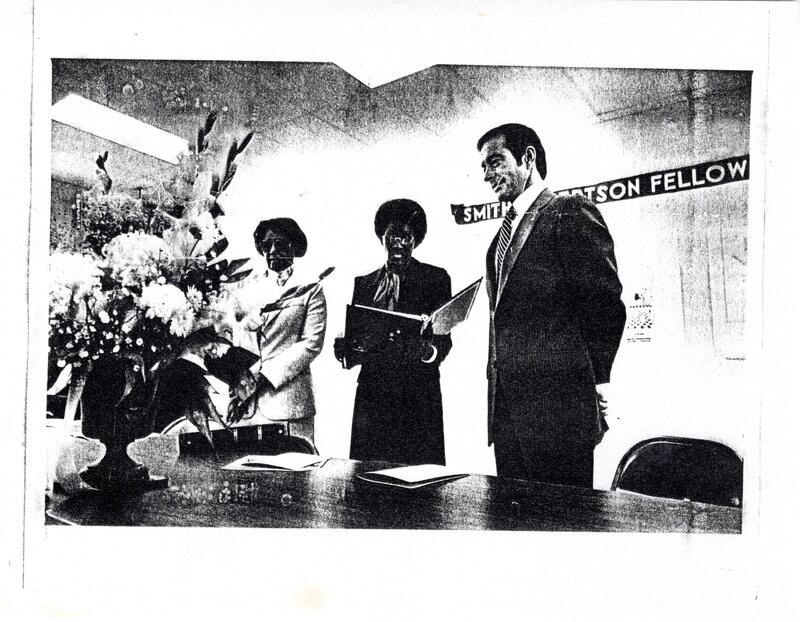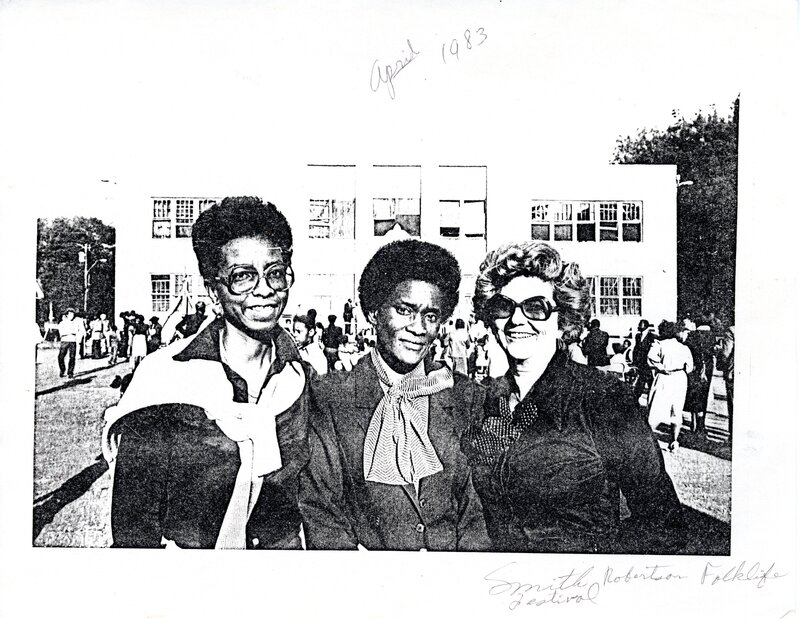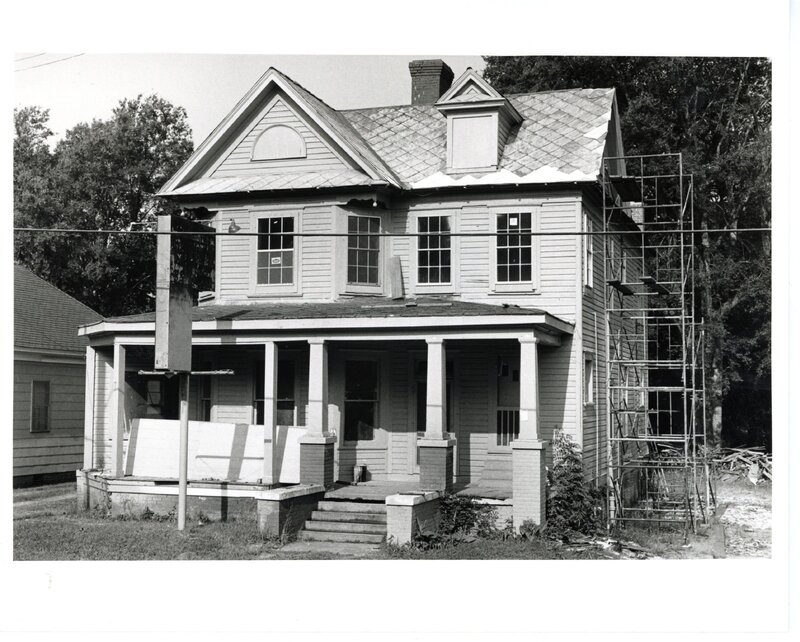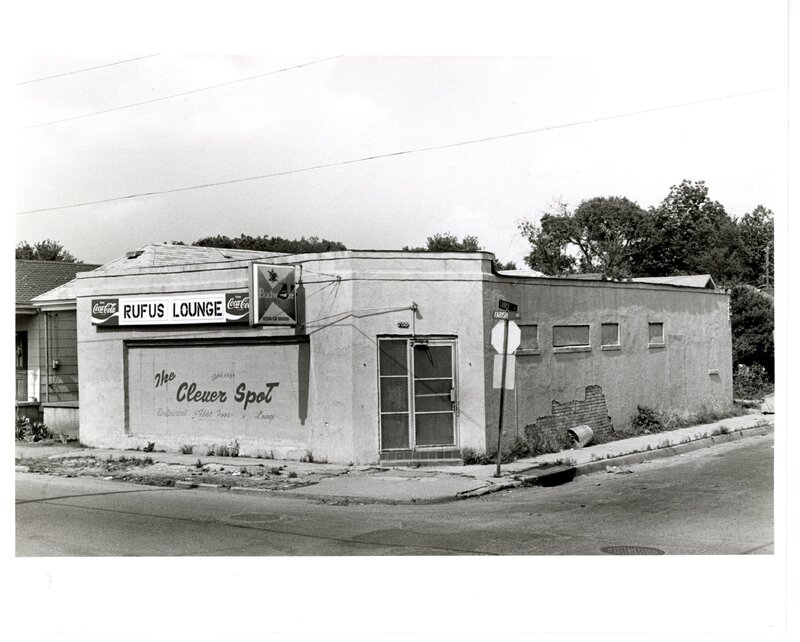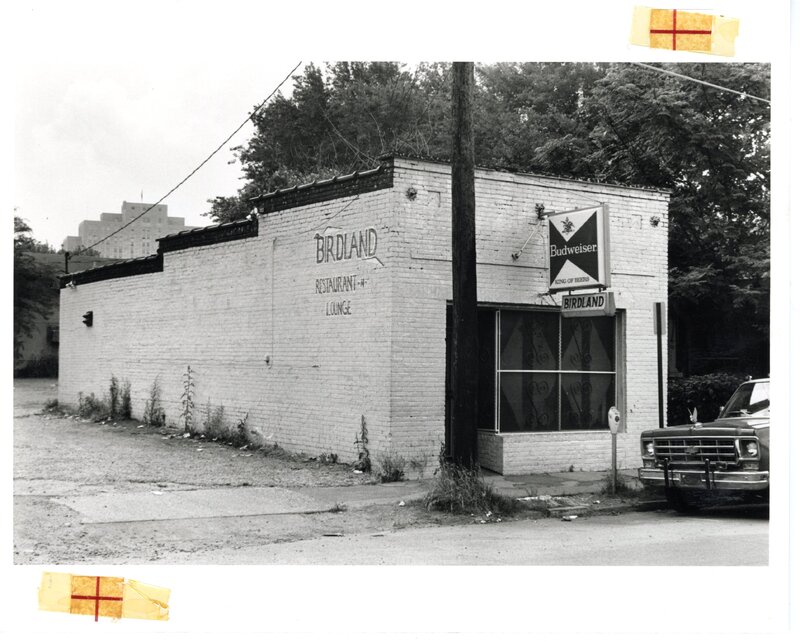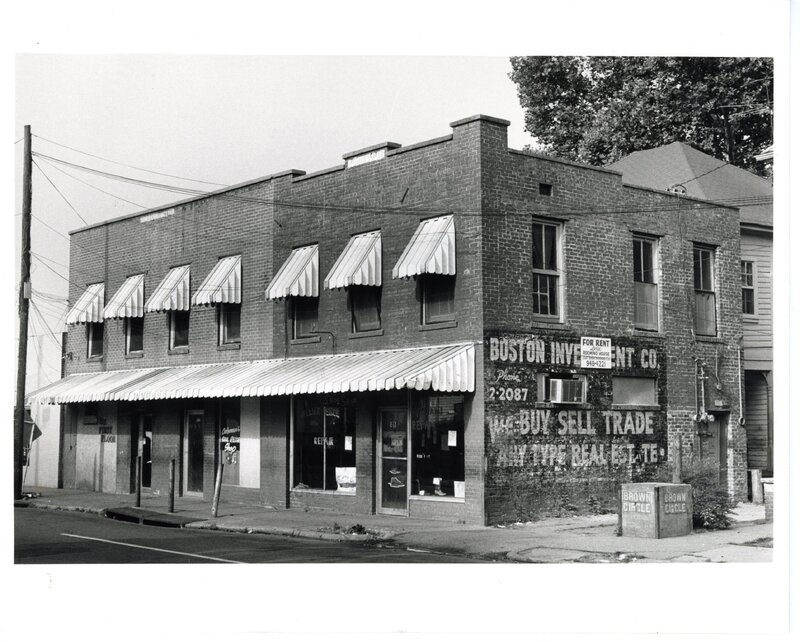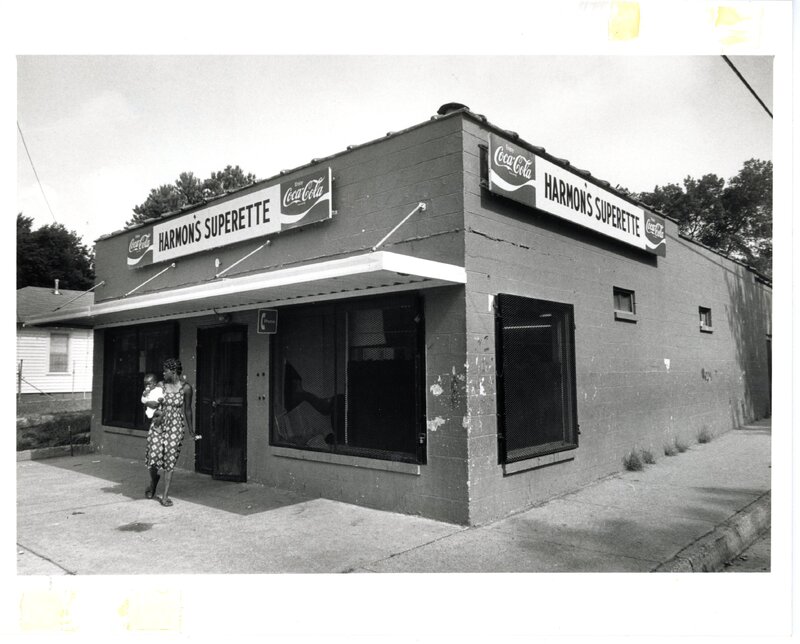Farish Street Oral History Project at JSU
This page draws from JSU's oral history and photography collections, documenting the legacy of Farish Street.
The Heart of Black Jackson
The Farish Street Historic District is one of Jackson, Mississippi's oldest and most culturally significant Black neighborhoods. More than a point on the map, it is a living record of African American heritage that helped shape the city itself.
Education has long been central to this neighborhood's identity. When Jackson State University—then Jackson College—relocated from Natchez in 1883, it made its first home in the basement of Mt. Helm Missionary Baptist Church on Lamar Street. Nearly a century later, in 1982, Dr. Alferdteen Harrison of Jackson State's Institute for the Study of the History, Life, and Culture of Black People (now the Margaret Walker Center) returned to the district with a team of scholars to capture its stories through oral histories and photography. That work created a lasting archive of memory and images that continues to illuminate the community's past.
From Cotton Mills to Community
The neighborhood’s origins stretch back to the 1830s, when 45 Black workers at a cotton mill became its first residents. In 1838, the railroad company brought in 140 enslaved people to build the line to Brandon, Mississippi. Many of their descendants remained here after emancipation in 1863.
The area took its name from Walter Farish, who settled before the Civil War. By the 1890s, it had become a thriving business district. Despite segregation and limited industrial growth, the community built its own foundations for success.
In a 1977 oral history interview, Rev. George Alexander Thomas recalled arriving in 1900: “There wasn’t any houses in this area except the Baptist church on Farish Street. All of this was dirt road. There were no cars at all. We could hardly stand the dust from the buggies and the wagons.” Yet by 1915, he remembered shops dotting the landscape—early signs of what would become a flourishing center of Black commerce.
During the 20th century, Farish Street became the heart of Black business life in Jackson. Oral history transcripts describe lawyers’ and doctors’ offices, general stores, florists, funeral homes, and countless other enterprises—all owned and operated by community members.
And when business hours ended, Farish Street filled with music. Clubs like the Crystal Palace and the Savoy hosted lively nights, while local labels such as Trumpet Records and Ace Records built a reputation in the music world. The Speir Phonograph Company also helped launch the careers of legendary Mississippi blues musicians.
Smith Robertson School: Where Dreams Took Flight
One of the gems in the Farish Street District is Smith Robertson school. It was built in 1894 as a school for Black children and was originally known as West Jackson Colored School. It was later bought by a formerly enslaved man named Smith Robertson who named the school after himself. The school remained open and operated until 1971. Being the only school for Black students in Jackson, Smith Robertson brought in students from all over the city. In a 1978 oral history interview, Julia Young, who worked at the school from 1951-1971, said, “Smith Robertson has always been a very proud school. In fact, that was the school that started all of the Black children going to school, they came from everywhere. They came from out this way, far out this way as they could come. They came from across the river to Smith Robertson School. They came from out west where there were no schools out there.”
Dr. W.E. Miller attended Smith Robertson from 1908-1913. He said this about his time at the school: “In what way do you think Smith Robertson helped you? Well, in numerous ways. We learned how to read. I learned to read at home, I knew the alphabet and I could stumble on a few words when I got there. Those things helped me…I think the reading program helped me.”
Smith Robertson closed in 1971, after Mississippi finally desegregated public schools. Verna Anderson, who taught second grade at the school from 1936 until 1971, said, “I think that after the school desegregated no one wanted Smith Robertson. It was in the slum area and didn't anyone-the white kids didn't want to go there, that's my opinion. They closed these schools so that they could integrate. Smith Robertson wasn't the only school that closed.”
Smith Robertson sat dormant until 1984 when it was reopened as a museum. It is now known as Smith Robertson Museum and Cultural Center and hosts a wide variety of events as well several permanent and traveling exhibits.
From Prosperity to Preservation
The story did not end there. In 1984, the building reopened as the Smith Robertson Museum and Cultural Center, a vibrant institution hosting events and exhibits that preserve the district's heritage. Just a year earlier, the neighborhood had celebrated itself through the Smith Robertson Neighborhood Folklife Festival, held April 9–11, 1983, which honored the district's cultural treasures.
By 1982, when Dr. Harrison organized the oral history and photography project, Farish Street had already begun to decline. The 1970s brought major changes: school desegregation, while essential, contributed to the closing of many Black businesses as customers gained access to other parts of the city. Farish Street, like other Black business districts across the South, struggled in this new landscape.
Photographer Roland Freeman documented this transition in powerful images that show both hardship and resilience in the early 1980s.
In 1980, Farish Street was added to the National Register of Historic Places. Today, more than four decades later, its homes, churches, and businesses continue to stand as reminders of a community that has shaped Jackson’s past and continues to inspire its future.
Credits
Garrad Lee, Digital Humanities Program Manager, Margaret Walker Center, Jackson State University
Further Readings
Brown, B. (2023, January 27). How the Smith Robertson School became a jackson museum. https://www.wjtv.com/hidden-history/black-history-month/how-the-smith-robertson-school-became-a-jackson-museum/
https://www.jacksonms.gov/smith-robertson-museum/
How to Cite This Source
"Farish Street Oral History Project at JSU," in HCAC Beta, https://hcacbeta.org/urislug [accessed Month, Day, Year]

